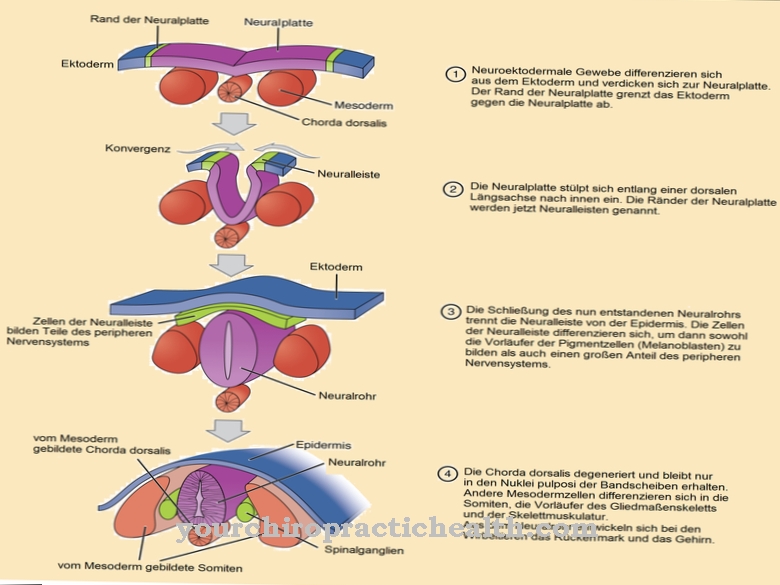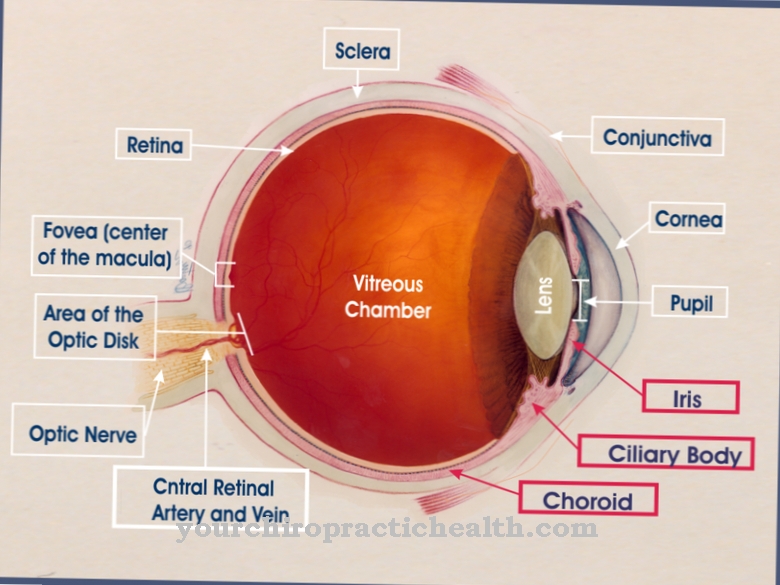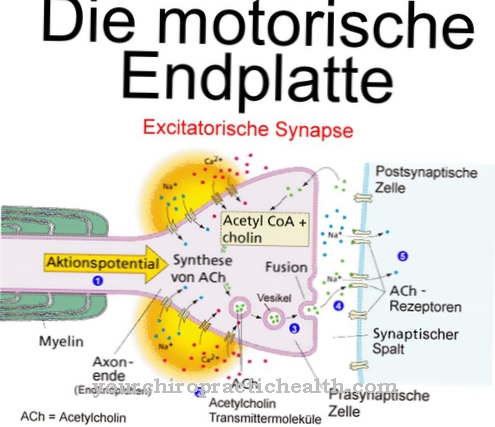The Foramen lacerum is an opening in the human skull. It is used as a passage for nerve fibers. In this way, the supply of the outer and inner areas of the skull can be guaranteed.
What is the foramen lacerum?
The foramen lacerum is a small opening in the skull. The human skull is made up of several hard bones. The substance of the bone is very stable and offers no possibility of passage. In this way, the skull serves to protect the brain.
All sensory stimuli and information received are processed in it and behavior is controlled. Emotions arise in the brain, memory is contained there and all cognitive processes and consciousness are anchored there. So that the brain is adequately protected, it is covered by the skull. This is made up of different bones and is divided into the brain and the facial skull.
There are various small holes to ensure the supply of blood or nerves between the inner and outer areas of the skull. Through them, the blood and nerve tracts pass through undamaged and thus ensure innervation of the various areas. The foramen lacerum is part of the region formed by the cranial bones. It is located at the intersection where the occiput, temporal bone, and sphenoid bone meet.
Anatomy & structure
The human skull is formed from various bones. The foramen lacerum is an opening located in the caudal, the rear area of the skull base. It is created in pairs on both halves of the skull.
When it comes to the structure of the skull, the bones of the brain skull and the facial skull must be delimited. All are made of hard bones and flow into one another. The brain skull is made up of 6 different bones. These are the occiput, parietal bone, temporal bone, sphenoid bone, frontal bone, and ethmoid bone. The foramen lacerum is formed by the occiput, the temporal bone and the sphenoid bone.
Doctors refer to them as occipital, temporal and spheniodal bone. The temporal bone is located on the temporal bone. It is a pyramidal bone structure called the pars petrosa ossis temporalis. There is a bone canal there, the carotid canal. This is where the foramen lacerum is located. In addition, it is delimited by the posterior margin and the petrosal process of the sphenoid bone. The petrosal process is a small extension of the bone of the sphenoid bone.
Function & tasks
As a small opening in the skull, the foramen lacerum has the task of allowing vessels and various fibers to pass through. This allows various blood and nerve tracts to move from the inside of the skull to the outer base of the skull. This ensures the supply of various areas inside and outside the skull.
The blood vessels that pass through the foramen lacerum include various emissary veins and arteries. The emissary veins are the parietal emissary vein, the mastoid emissary vein, the occipital vein, the condylar emissary vein, and the occipital emissary vein. There are smaller veins that connect the superficial veins and the sinus inside the head. In addition, the arteria canalis pterygoidei and the ramus meningealis of the arteria pharyngea ascendens pass through the foramen lacerum. The arteria canalis pterygoidei supplies the nasal and oral cavities as well as the ear trumpet, the auditory tuba, with its branches.
The ramus meningealis of the ascending pharyngeal artery supplies the pharyngeal muscles, the tympanic cavity and the dura mater with its branches. In addition to the bloodstream, various nerve fibers pass through the foramen lacerum. These include the minor petrosus nerve and the pterygoid canal nerve. This unites the major petrosal nerve and the deep petrosal nerve. The nervus petrosus minor is the IX. Assigned to cranial nerve. This is the glossopharyngeal nerve, which with its branches forms the parotid gland. This is the largest gland in the human body that is responsible for producing saliva.
Diseases
The foramen lacerum allows important blood and nerve tracts to pass through. The opening can be closed by tissue swelling in the adjacent brain areas. This leads to blood congestion.
The congestion of the blood can cause the walls of the blood vessels to tear. This causes bleeding which can cause dizziness, impaired consciousness, or loss of consciousness. In addition, the risk of a brain attack or stroke increases. Under certain circumstances, this can be fatal or cause lifelong symptoms of paralysis in various systems of the body. In addition, a closure of the opening means that the nerve fibers can no longer continue their way unhindered and the corresponding organs are no longer adequately supplied. As a result, the parotid gland, the ear trumpet and the throat muscles are no longer adequately innervated and their function is restricted.
As soon as the parotid gland produces less saliva, this affects the swallowing process and language formation. The food can no longer be sufficiently broken down, the swallowing process becomes more difficult and the sound production is restricted. The throat muscles are important for the activity of the human teeth and the chewing process. The strength of the four muscles of mastication required for this is reduced. The consequence of this is that the chopping of the food is more cumbersome and laborious. A failure of the systems is not to be expected, since the nerve fibers for the innervation of the organs described flow together via different routes.



























